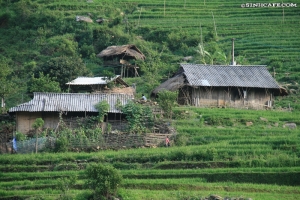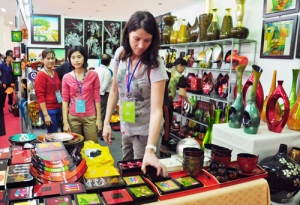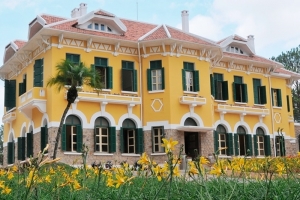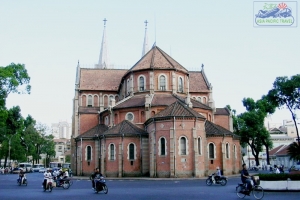This three-stringed lute is used by several ethnic groups in Vietnam. The Viet call it Dan Tam, whereas the Ha Nhi call it Ta in. This instrument exists in three sizes: large, medium, and small. The small is the most popular. The sound box is oval-shaped, and the soundboard is pierced with sound holes. A bridge is fixed on the…
Sao truc, the bamboo flute, which is made from a stem of fine bamboo pierced with finger holes, has long been attached to Vietnamese culture. A vertically-held bamboo flute is made from the very bottom of a bamboo tree. Bamboo is hollow except for the nodes which are spaced at intervals along the pipe. These nodes are knocked out to form…
T'rung is one of the popular musical instruments closely associated with the spiritual life of the Bahnar, TSedan, Giarai, Ede and other ethnic minority groups in the Central Highlands of Vietnam. This traditional folk-musical instrument is made of short bamboo tubes differing in size, with a notch at one end and a beveled edge at the other. The long big…
The trong com (rice drum) gets its name from the practice of placing a pinch of hot steamed rice in the middle of the drum skin to "tune" the instrument. The trong com onsists of a hollow cylinder or hemisphere with a membrane stretched tightly over one or both ends, played by beating with sticks. The player, when standing, has the…
The K'Ni is a stringed musical instrument, sawing bow branch and is popular among many ethnic minority groups living in northern highlands (central Vietnam) such as Bahnar, Gia Rai, E De, Se Dang, Pako, and Hre... The most notable particularity of K'Ni is that it has no resonator. The whole K'Ni is a round or straight branch of bamboo section…
Dan Day is a special instrument of Vietnamese origin. This three-stringed lute is used incorporate the peculiarities of the two-stringed lute (dan Nguyet), the four-stringed pear-shaped lute (dan Ty Ba), and the three-stringed lute (dan Tam). In the past, the dan day was an accompanying instrument used only for one genre of songs, which later divided in two variants known…
The Klong put is the Xe Dang language name of a musical instrument of the wind family, air driving-in branch. It is played by ethnic groups in Tay Nguyen (Central Highlands) such as the Xe Dang, Bahnar, Gia Rai, Hre, etc. A traditional Klong put consists of many large empty hornless bamboo sections. The length of each section ranges from…
The Cong Chieng is a kind of musical instrument casted from mixed copper and belongs to the idiophonic family. In Vietnamese language, the word "Cong" points to a musical instrument with a bossed part in center (bossed gong) and "Chieng" without it (flat gong).
Ca tru music sounds strange to the uninitiated. Clicks and clacks accompany the centuries old ballads. It is not the kind of music that inspires toe tapping or humming. Originally, ca tru was also called hat a dao or hat noi (literally song of the women singers). Attractive young singers entertained men in a relaxed environment, sometimes serving drinks and…
The folk-song Quan Ho, a very rich and beautiful musical storehouse of our people, has a very long lasting history. During all its existence, successive creations have unceasingly changed the type of the folk-song Quan Ho. Today, there are "Quan Ho dai", "New Quan Ho", "the renovated Quan Ho". This shows that there may be some kinds of Quan Ho…















































































































